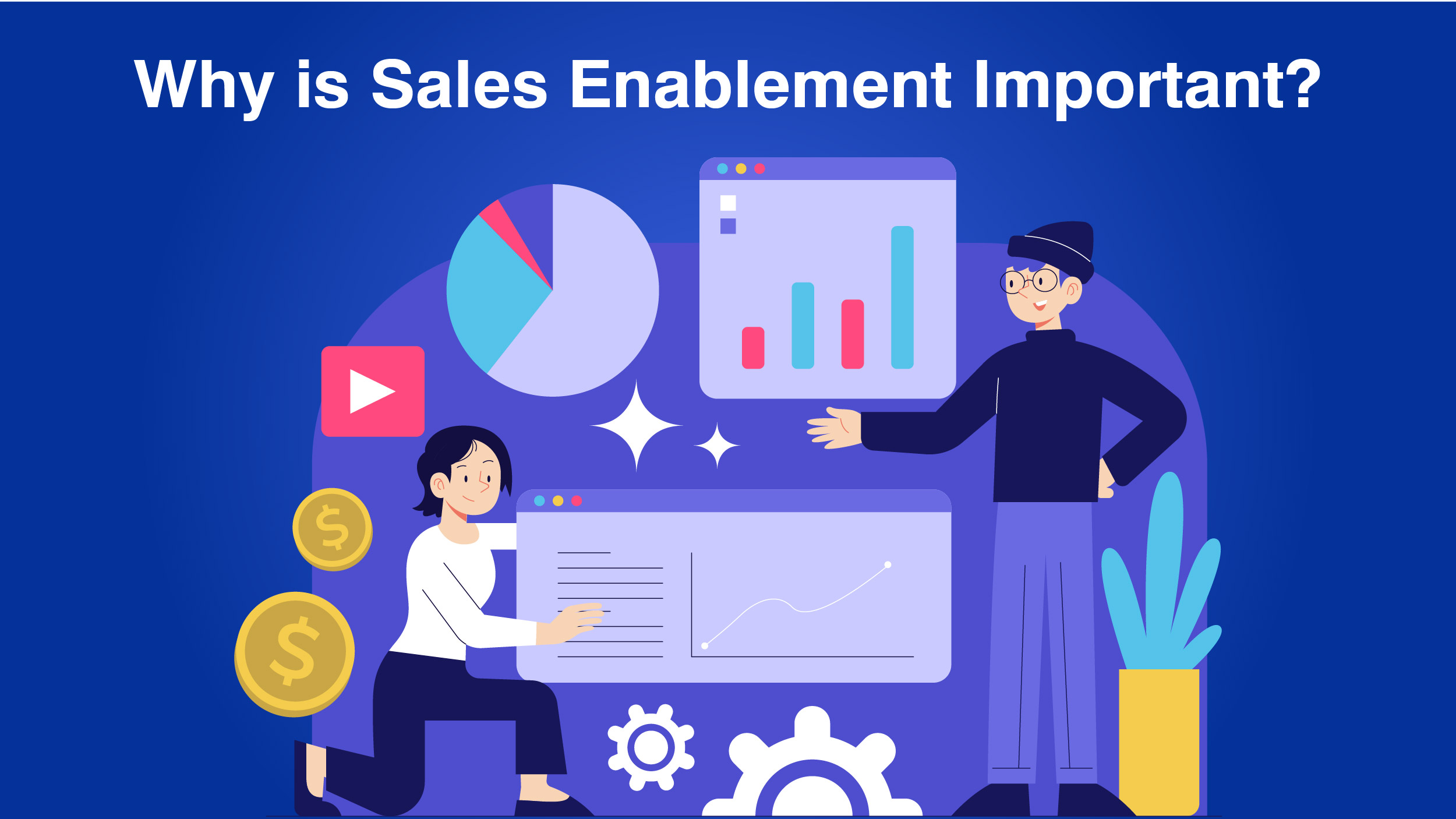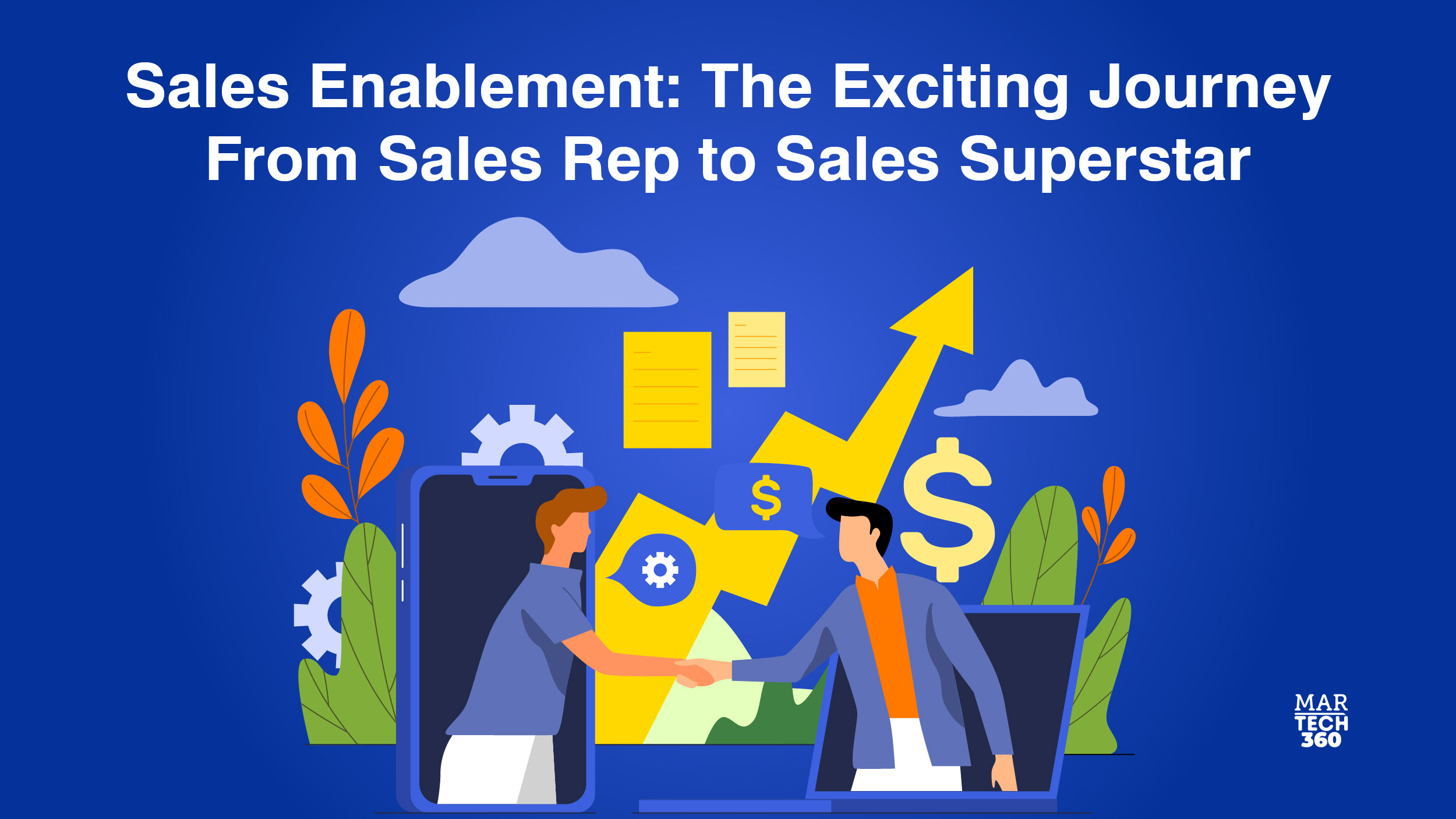If you hand someone a task, along with a bunch of helpful stuff to use, chances are they’ll get it done quicker and better compared to someone who’s flying solo. Aligning your sales and marketing organizations is the first step towards sales enablement.
And it’s the same deal with your sales team. Give them the right tools, materials, and resources to convert leads, and they’ll be closing deals left and right, bringing in that sweet revenue for your business.
So, how do you make sure your reps have all the good stuff to boost conversions and guide leads through the buyer’s journey?
Simple: sales enablement.
What is Sales Enablement?
Sales enablement is the ongoing process of equipping your sales team with the necessary resources to increase deal closures. This includes providing them with content, tools, knowledge, and information to effectively sell your products or services to customers.
Why is Sales Enablement Important?
 Selling’s tough! Reps often start with a big question mark. Who’s involved, what’s the plan, and what really counts? They’ve got to get the problem and fix it. That’s why this process matters. Without support, sellers will struggle to move prospects along.
Selling’s tough! Reps often start with a big question mark. Who’s involved, what’s the plan, and what really counts? They’ve got to get the problem and fix it. That’s why this process matters. Without support, sellers will struggle to move prospects along.
Here are a few tough challenges reps deal with, which emphasize the need for this procedure.
Salespeople must become experts. According to a June 2022 Salesforce survey, 74% of sellers find their roles becoming more consultative than transactional. This requires a deeper understanding of products, customers, and markets to add more value to each conversation.
Selling in a hybrid setup is tough. 58% find virtual selling harder than in-person, but only 29% are trained for the same. Sellers must excel both on screen and in person.
In uncertain times, there’s little margin for error. Market volatility increases pressure on sellers to maintain revenue. It’s not just about growth; it’s about doing more with less.
Effective enablement saves the day when done correctly. The Harvard Business Review emphasized that leading organizations focus on genuine capability building, not just onboarding and training.
Sales enablement isn’t just about basics; it’s about equipping reps with the tools to excel. 76% of companies using it see a sales boost of 6% to 20%. If you’re striving in sales, why not give it a shot?
What are the Benefits of Sales Enablement?
 Sales enablement aligns people and technology for one goal: sales success. It streamlines sales cycles, enhancing buyer interactions with personalized content. When done right, it boosts time spent selling, win rates, and deal size. Additionally, it
Sales enablement aligns people and technology for one goal: sales success. It streamlines sales cycles, enhancing buyer interactions with personalized content. When done right, it boosts time spent selling, win rates, and deal size. Additionally, it
- Establishes a unified content hub, ensuring sellers have approved materials for impactful conversations and improved win rates.
- Equips sellers with the expertise to engage buyers across the entire sales process.
- Simplifies communication for sellers, delivering pertinent information from various teams and departments.
- Offers marketing insights, guiding teams on content effectiveness in expediting deals.
- Aligns marketing, enablement, operations, and sales for cost reduction, revenue growth, brand integrity, compliance, and higher deal closures.
How to Create a Sales Enablement Strategy?
Aligning your sales and marketing organizations is the first step towards sales enablement. Aligning your revenue targets, go-to-market strategy, and appropriate sales programs with focused marketing efforts aids in improving sales effectiveness.
Provide your sellers with a peek into the customer’s journey using sales force automation and other forms of CRM solutions to assist in speeding up sales deals. These sales enablement tools can aid in your customer data management objectives, providing your sellers with the necessary customer insight to engage with leads and prospects. Your message will be consistent if you syndicate your content marketing efforts and extend that content to sellers.
To tactically implement a sales enablement strategy, start by asking yourself two important questions.
- Which systems and tools are currently in use by your sales reps? Are they using a CRM system, contact management solution, mobile devices, or spreadsheets?
- Which systems are the other interconnected teams (like marketing) utilizing? Are they using marketing automation or content management systems?
Answering these two questions will pave the way forward.
Key sales strategy tips:
- Prioritize sales training and onboarding for new strategies.
- Understand and address customer concerns effectively.
- Foster collaboration between marketing and sales for content creation.
- Develop content combining analytics with reps’ insights.
- Invest in tech for streamlined customer interactions and data access.
What are Sales Enablement Tools?
Experts in this space leverage various tools and technology to aid them in their responsibilities.
Among these tools are:
- CRM (customer relationship management)
- Sales force automation
- Sales intelligence, planning, and forecasting
- Marketing automation (lead generation and email marketing)
- Content management
Final Thoughts
Sales enablement isn’t just a fad; it’s a fundamental change in how we approach the sales game.
From getting sales and marketing on the same page to using sales tech smartly and giving reps the right training, it’s all about leveling up your team’s performance.
Equip your sales crew with the right tools, knowledge, and content, and watch as this process amps up efficiency and teamwork, and delivers outstanding outcomes.
So, round up your teams, set up meetings, and dive into the game-changing world of sales enablement today!


Comments are closed.